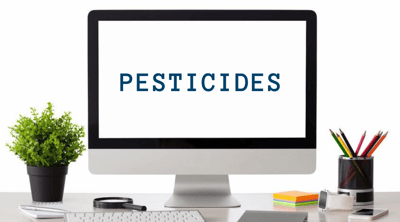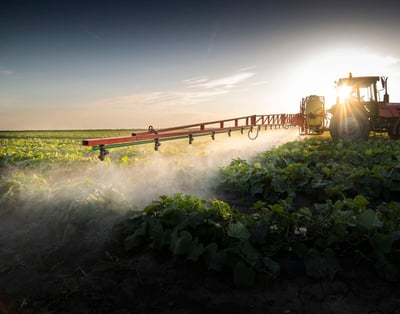Single Window Initiative (SWI): Survival Guide for Pesticides
The new SWI landscape
The Single Window Initiative means several changes for importers:
 how you need to submit documentation is in flux;
how you need to submit documentation is in flux;- when that documentation is needed has changed; and
- which documentation is required is also shifting.
Our goal is to help you understand what is expected for the new “how, when, and what” of SWI requirements relating to the items you ship. These updates guide importers through specific commodities or categories of commodities, and the Participating Government Agencies (PGAs) that are affected.
How, when, and what
- Single Window Initiative requires all import documentation to be prepared and submitted before the shipment reaches customs.
- SWI is a new way of submitting documentation. All docs will be submitted using the Integrated Import Declaration (IID). Some of the requirements for how you submit are changing. For example: some documents that needed to be faxed now require an uploaded electronic image or just the document number.
- There may be changes to which documents are required under SWI.
- The launch date of SWI is still unknown, but it’s time to get proactive and adjust your workflow to ensure paperwork is ready before you ship.
Why importers need to know
Under the new SWI, it’s important that you understand which Participating Government Agencies (PGAs) are regulating your products. Some products are regulated by multiple PGAs, and the PGAs regulating your products may have changed under SWI. Additionally, each PGA and the CBSA can issue penalties for incorrect and missing documents. Understanding what information and documentation is needed for clearance will make the clearance process into Canada smoother and more efficient.
 Pesticides: Health Canada, Pest Management Regulatory Agency (PMRA)
Pesticides: Health Canada, Pest Management Regulatory Agency (PMRA)
Health Canada’s Pest Management Regulatory Agency (PMRA) is responsible for regulating pesticide (pest control) products in Canada.
The SWI data elements required for release include:
Intended end use: the licenses and documents required for pesticides depend on the intended end use of that pesticide
- Manufacture
- Research
- Own use
- Resale
Canadian product category: the categorization to which the goods belong
- Registered pest control product (other than a device)
- Registered device
Document type: the product category combined with the intended end use establishes which LPCO (License, Permits, Certificates, Other) documentation is required.
If the intended use is for Manufacture and the Canadian Product category is Registered pest control product (other than a device): PMRA registration number is mandatory and the Product Label is optional, but recommended.
If the Intended use is for Manufacture and the Canadian Product Category is a Registered device: PMRA registration number is mandatory and product label is optional, but recommended.
If the Intended use is for Research and the Canadian Product Category is a Registered pest control product: PMRA research authorization certificate or PRMA research notification certificate (one or the other is mandatory), product label (optional, but recommended)
If the Intended use is for Research and the Canadian Product Category is a Registered device: PMRA research authorization certificate or PRMA research notification certificate (one or the other is mandatory), product label (optional, but recommended)
If the Intended Use is for your Own use and the Canadian Product Category is a Registered pest control product: GROU import certificate is mandatory and the product label is optional, but recommended.
If the Intended Use is for your Own use and the Canadian Product Category is a Registered device: GROU import certificate is mandatory and the product label is optional, but recommended.
If the Intended Use is for Resale and the Canadian Product Category is a Registered pest control product: PMRA registration number is mandatory and the product label is optional, but recommended.
If the Intended Use is for Resale and the Canadian Product Category is a Registered device: PMRA registration number is mandatory and the product label is optional, but recommended.
Document reference number: the document reference number required depends on the document type.
- PMRA research authorization certificate number
- GROU import certificate number
- PMRA research notification certificate number
- PMRA registration number
Please note, although product label is not mandatory at time of release, it may be requested.
 Importer contact information: Health Canada requires contact information for all imports
Importer contact information: Health Canada requires contact information for all imports
- Importer name
- Telephone number or email address
Manufacturer contact information: Health Canada requires contact information for all imports
- Manufacturer name
- Telephone number or email address
Exception process:
- PMRA scheduled pest control products
- PMRA exempt pest control products
UNDG: pest control can be identified through their UNDG (United Nations Transport of Dangerous Goods) code. It is not mandatory but is recommended to provide clearer identification of the product.
CAS number: pest control can be identified through their CAS (Chemical Abstracts Service) number. It is not mandatory but is recommended to provide clearer identification of the product.
- The Chemical Abstracts Service (CAS) Registry number must be provided.
Product name: the product name of the commodity must be provided
Component/ingredient detail: for registered pest controlled products (other than devices) that contain active chemical ingredients regulated by PMRA, details of the ingredients must be provided.
- Ingredients: the percentage of concentration of each ingredient must be provided.
- Ingredient quantity: the quantity of each ingredient must be provided.
Although the following elements are not mandatory for the release of the commodity, they may be asked for and should be supplied:
- Brand name
- Manufacture date
- Batch/lot number
For SWI, being proactive is your best strategy—gather all your information and documentation as far in advance as possible. Importers who know the requirements for the products they’re importing, and understand the new processes under SWI, will have a much smoother import experience.
As you adjust to the new requirements and workflow of the Single Window Initiative, we're here to help. Our customs team is ready to help you understand the SWI and its new requirements for your commodities—contact us today!
SWI. It's what we do.

Latest Articles
- 7 ways Canadian importers reduce risk when ordering overseas
- Watch out for these extra charges on your freight bill
- Key differences between duty drawbacks and duty refunds for importers
- Mitigating container shortages and rising shipping prices for ocean imports
- How Canadian importers benefit from end use tariff codes and conditional relief
